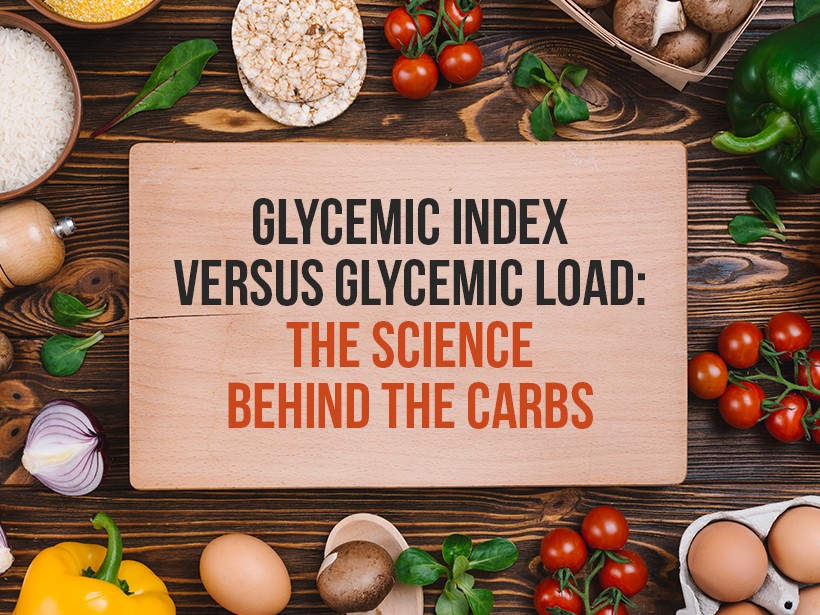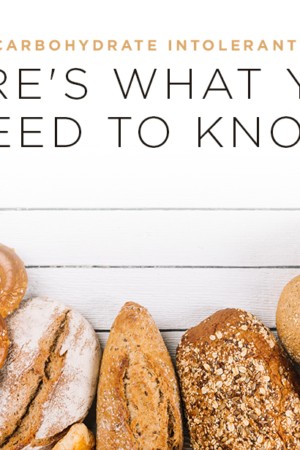Advocates for healthy eating have long understood that not all calories are equal. The carbohydrates in different foods can vary in their impact on your blood sugar, especially if you suffer from diabetes. Two tools can help us get a clearer understanding of how a given food might impact our health: glycemic index and glycemic load.
The glycemic index
Historically, we viewed carbohydrates as being either “simple” or “complex” in reference to the chemical makeup of the carbohydrate. Simple carbs are composed of only one or two sugars, while complex carbs have multiple sugars that are linked together. Since they do not need to be broken down, the body uses simple carbs (such as raw sugar or fruit juice) quickly. Unfortunately, they also cause a corresponding spike in both blood sugar and insulin secretion, which can cause health problems. Complex carbs have historically been seen as a healthier choice. Since they require more time for the body to utilize them, their impact on sugar and insulin is spread out over time, and therefore lessened.
In recent years, however, we have learned that thinking in terms of simple and complex carbs does not help us fully understand the impact that carbs can have on our body. Some carbs are considered to be complex, but because they offer little fiber, they have as much impact on blood sugar and insulin as a simple carb. In other cases, some simple carbs, because of their nutritional value, have a negligible impact on our health.
The glycemic index gives consumers an understanding of the impact an individual food may have on his blood sugar. For example, white bread—although it is a complex carb—has a glycemic index of 75, which is actually higher than ice cream (glycemic index of 50), meaning that the carbs found in white bread can spike the sugar in your bloodstream more quickly than ice cream.1
The glycemic load
But before you go slapping your favorite sandwich meat between two scoops of ice cream, you need to understand glycemic load. Although the glycemic index is helpful in determining the quality of carbohydrates, it doesn’t help you understand how much of a given carb might be in the food you’re eating. Glycemic load does just that: it combines the glycemic index with the amount of carbs that a food item delivers. It helps you understand both the quantity and the quality of the carbohydrate to get its impact on blood sugar. For example, watermelon has a glycemic index of 76, but its glycemic load per serving is only 8 because it contains so few carbohydrates in a serving.2
Glycemic index/load and the keto diet
Studies have linked lower glycemic foods to a decreased chance of developing both diabetes and cardiovascular diseases.3 However, since the keto diet focuses on restricting carbohydrate intake, those who are on it have little to fear from sugar-related illnesses. Additionally, both the glycemic index and the glycemic load can help you evaluate your own diet to see where carbs are having the biggest impact on your health.
NUTRITIONAL DISCLAIMER
The content on this website should not be taken as medical advice and you should ALWAYS consult with your doctor before starting any diet or exercise program. We provide nutritional data for our recipes as a courtesy to our readers. We use Total Keto Diet app software to calculate the nutrition and we remove fiber and sugar alcohols, like erythritol, from the total carbohydrate count to get to the net carb count, as they do not affect your blood glucose levels. You should independently calculate nutritional information on your own and not rely on our data. The website or content herein is not intended to cure, prevent, diagnose or treat any disease. This website shall not be liable for adverse reactions or any other outcome resulting from the use of recipes or recommendations on the Website or actions you take as a result. Any action you take is strictly at your own risk.
- Total Keto Diet Featured at DownloadAstro – App of the Day! - July 30, 2019
- Israel’s Yofix Launches Plant-Based Yogurt Alternative - March 4, 2019
- Glycemic Index Versus Glycemic Load: the Science Behind the Carbs - February 20, 2019




